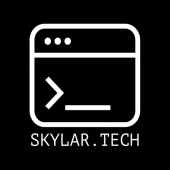Leaderboard
Popular Content
Showing content with the highest reputation on 08/09/20 in all areas
-
Docker: Lidarr (Nightly) with Lidarr Automated Downloader (LAD) script included! Script: https://github.com/RandomNinjaAtk/lidarr-automated-downloader Documentation can be found here: https://github.com/RandomNinjaAtk/docker-lidarr-lad IMPORTANT: I will be discontinuing this container sometime soon, its already removed from the app store. Please use: AMD and AMVD in the app store as replacements Documentation found here: https://github.com/RandomNinjaAtk/docker-amvd https://github.com/RandomNinjaAtk/docker-amd1 point
-
Most articles/videos for virt-manager on OSX connecting to Unraid seemed a bit dated so thought I'd share what I did to get things running. What's outlined below seems like a lot but once you've done it once it can be repeated in under 5 minutes. My requirements: - Create, start and stop VM's on Unraid from OSX - Create + manage snapshots on Unraid from OSX - Clone VM's on Unraid from OSX - Monitor basic stats like cpu/ram/network usage Guide: ########## ## Unraid ########## 1. Setup libvirt + qemu to listen on "0.0.0.0" A lot of articles referred to editing "/etc/libvirt/libvirtd.conf" but this didn't exist in "/etc/libvirt/". Restarting VM service + array fixed it for me. a) Restart VM service + array Settings -> VM Manager -> Set "Enable VM's" to No Main - Stop Array Main -> Start Array Settings -> VM Manager -> Set "Enable VM's" to Yes b) SSH to Unraid server and change two files: /etc/libvirt/libvirtd.conf listen_addr = "0.0.0.0" <-- default is "127.0.0.1" /etc/libvirt/qemu.con vnc_listen = "0.0.0.0" <-- default is "127.0.0.1" c) Again, restart VM service and array (doing both is likely redundant) Settings -> VM Manager -> Set "Enable VM's" to No Main - Stop Array Main -> Start Array Settings -> VM Manager -> Set "Enable VM's" to Yes ########## ## OSX ########## 1. Install virt-manager on OSX a) Prerequisites: Install Homebrew @ https://brew.sh b) Install virt-manger + dependencies: brew cask install xquartz brew tap jeffreywildman/homebrew-virt-manager brew install virt-manager virt-viewer mkdir -p /usr/local/Cellar/libosinfo/1.7.1/share/libosinfo cd /usr/local/Cellar/libosinfo/1.7.1/share/libosinfo/ curl http://www.linux-usb.org/usb.ids -O curl https://pci-ids.ucw.cz/v2.2/pci.ids -O 2. Create virt-manager app instead of launching via Terminal Why? There are tools such as "appify" that will wrap a shell script and create pseudo OSX App but it will still launch a Terminal window in addition to virt-manager. I wanted virt-manager to launch like a native OSX app. a) Create virt-manager app via Automator Applications -> Automator -> New Document -> Workflow -> Choose Scroll down and double click "Run Shell Script" Paste (w/ quotes) -> "/usr/local/bin/virt-manager" File -> Save -> Click down arrow to expand view -> Choose "Applications" -> Save As: virt-manager -> File Format: Application -> Save b) Add virt-manger icon to app: Grab virt-manager icon @ https://icon-icons.com/icon/virt-manager/94317 (just click icon and drag to desktop) Double click icon (it will open in Preview) CTRL-C to copy Applications -> virt-manager -> Right Click -> Get Info Click on icon and CTRL-V to paste 3. Connect to Unraid a) Launch virt-manager Applications -> virt-manager b) Add connection to Uraid File -> Add Connection Hypervisor: Custom URI Autoconnect: Checked Custom URI: qemu+tcp://root@<unraid-server-ip>/system ** Note - There is no TLS or password auth setup. If you are running in environment where this is required I would suggest looking into ssh auth vs. tcp.1 point
-
I'm running a new Ryzen 3000 series system on Unraid 6.8.0 and can not query the systems temperature sensors using the Dynamix - System Temp plugin. After a little digging, I found users Skitals and Leoyzen made kernels forking 6.8.0-RC5 to support this features (as well as others). I'd like to see the Linux kernel patches for the k10temp and nct6775 make it into the next Unraid RC build to support users of this platform and CPU architecture. Note, my Realtek R8125 on my ASUS ROG Strix x570-E seems to be working with the out-of-tree drivers and I don't seem to have the VFIO bug that is referenced in the 2nd thread on my 6.8.0-stable system. References: Thank You! -JesterEE1 point
-
This has been discussed in other threads, e.g. here, but I didn't find an entry in Feature Requests so here goes. Unraid is not spinning down SAS drives. It appears to try, and the GUI indicates that the drive is spun down (with a grey ball and temp not being presented), but in reality these drives keep spinning, remaining warm and drawing full power, 24x7. The problem seems to be that hdparm, which is used to spin down drives, does not affect SAS drives. A solution might be to use the sg_start command (haven't tested this thoroughly but it seems to be doing the right thing): sg_start -s /dev/sdX <== spin up sg_start -S /dev/sdX <== spin down (unfortunately the above does not seem to do the right thing unto SATA drives, so we'll either need to have conditional logic, or maybe just run both tools in sequence for each spindown/spinup operation.) I'm sure adding SAS spindown capability will be met with massive gratitude from a lot of us. EDIT 2020-09-20: A temporary stopgap solution is now available, you can get it here. EDIT 2020-09-29: The temporary solution is now available as a plugin. You can install the plugin from this URL.1 point
-
In the meantime, perhaps provide a LetMeGoogleThatForYou on the package name link?1 point
-
1 point
-
The command listed in the description is incorrect. SSD Trim trims all eligible devices1 point
-
The fstrim command is 'fstrim -v -a' executed by the fstrim plugin. Go to a command line and try it. You'll see it will trim all SSDs.1 point
-
My guess is something wrong with the latest update of this Docker (7 days ago). I reverted back to the last update (2 months ago) and it's working again. If you want to try this, edit the Docker and change the repository to be: linuxserver/dokuwiki:2018-04-22c-ls41 No warranties, expressed or implied!1 point
-
1 point
-
Yes, this is true. The BIOS provided by ASRock does allow the iGPU to be used for transcoding while also still having IPMI/BMC active for all functions except video output. This is working great. What it does not do is keep the video output to the VGA port/KVM active once the i915 iGPU drivers are loaded. The iGPU has no path to the VGA port so there is no video output (just transcoding) when it is loaded. Loading the iGPU deactivates the video output from the BMC to the VGA port as the BMC is no longer the active onboard video adapter.1 point
-
New update should be out that will allow you to set which list types to process. Effectively enabling that feature. Also curious, what format are you looking to convert too? The original script used to have conversion features built in, not sure if I'm going to re-add it.1 point
-
Can't find the issue but found a solution that it works again... Stop the container Delete all contentens in the jdownloader2 directory that's in your appdata folder (also the hidden files and folders) If you want to keep your accounts copy these files from the /cfg directory over to your local computer: org.jdownloader.settings.AccountSettings.accounts.ejs & org.jdownloader.settings.AccountSettings.json Start the container and wait for it to finish everything Go to the advanced tab and type in 'cnl' and uncheck the box at 'RemoteAPI: Extern Interface Localhost Only' Stop the container and put the two files saved erlier to your /cfg directory (skip this step if you don't backed up these two files) Start the container again In Windows type in: 'netsh interface portproxy add v4tov4 9666 IP_OF_THE_CONTAINER 9666 127.0.0.1' (in your case 192.168.1.254) Test it with a Click'n'Load file or enter in your browser on Windows 'http://127.0.0.1:9666/flash' and you should be greeted with a page that says 'JDownloader' (All assumed that you allready created a port in the template from 9666:9666) Don't know what caused the issue but found a few threads with a title like 'Click'n'Load stopped working' and in the most cases a fresh installation solved the issue... Hope this also works for you1 point
-
okay this was the solution for me: stop the container delete everything except the "cfg" folder in the jdownloader2 program folder (which is mounted in appdata) start the container again and let it update / reload the program it seems that my installation was in a bad state. maybe it would be worth considering only mounting the cfg folder into appdata and reload the program at each start, but i dont know. 👍🙂1 point
-
1 point
-
Am just starting out on this route, and K1ngJony am just looking for the same sort of build and useage. Mainly want it for a NAS and plex server. And maybe a VM of windows. Am in Australia also so very keen on what you find.1 point
-
Linux automatically uses free RAM for cache but that's not relevant. The Dashboard RAM number excludes cache (just checked albeit on 6.9.0-beta25). So your 96% means 96%. Any other docker beside Plex? Transcoding to RAM? To reduce the chance of your VM getting killed because of OOM, you can limit the docker memory usage so it get killed if it uses too much (reducing the chance of the VM getting killed instead). Also for troubleshooting purposes, it's always a good idea to attach diagnostics (Tools -> Diagnostics -> attach whole zip file).1 point
-
no, it is bridged and not NATed. big difference. yes and no. if people do not know what they are doing, and how everything is working together, they can learn. 🙂1 point
-
I made a post about how to accomplish this here: https://skylar.tech/installing-mqtt-under-docker/ I also have various other posts that utilize MQTT that you may find worth checking out.1 point
-
All your settings and licence file are stored it the 'config' folder on the flash drive. You want to make sure you can read its contents and the easiest way to do this is by making a backup of this on your PC/Mac. I would then recommend downloading the zip file for the release you are using and extracting all the bz* type files overwriting the copies on the USB stick. This should fix any corruption of the system files1 point
-
OMG, Thank you!!! This is exactly the same thing that was happening to me and the reason i was about to post! First off, thank you for having the same unraid setup as me (custom domain, using cloudflare, same issue with wireguard). Secondly, I took your suggestion and went with it. I didn’t like having my domain root (domain.com) not being protected by cloudflare’s proxy. So i created a subdomain (vpn.domain.com) for this purpose. So my A record still is protected by Cloudflare, but now my subdomain’s CNAME record isn’t. I know in the end it still points to the same place, but I still feel better having it setup this way. One last question though... From what I read, the Peer DNS Server should point to the router OR to another DNS server. My network uses the 192.168.8.0/24, but WG uses the 10.253.0.0/24. So my server usually has 192.168.8.10, but gets assigned 10.253.0.1 through WG. So when it comes time to fill in the Peer DNS Server, would I put in the router’s IP as 192.168.8.1? Because when I do that, it doesn’t work — I can connect to the VPN, I can access the router at 192.168.8.1, but I cannot access the unraid server at 192.168.8.10 OR at 10.253.0.1. Oh, it DOES show that it’s trying to connect to my unraid server via the xxxxxxxxxxxxxxxxxxxxxxxx.unraid.net domain. So in the end I’m forced to put in 1.1.1.1 to get it all to work correctly. I would prefer to just put in my router’s IP so that if i ever change the DNS Server, I just change it in one place (my router) as opposed to my router AND the WG settings.1 point
-
Container launches and it shows up in steam server list. Thanks a bunch!1 point
-
Container starts now properly, please update the container (redis error should be hopefully also be gone). ATLAS.log1 point
-
great! glad you were able to get it working. I added a note about Cloudfare to the troubleshooting section.1 point
-
You likely have to set the network of the container to use proxy. Everything is completed in the container itself. It only makes API calls to Lidarr, so it would not use lidarr's connection in any way. It currently doesn't do upgrades. That could be something I add, right now it only processes missing list, not cutoff.1 point
-
1 point
-
There's a new version of videosort that supports Python3. It fixes the post-processing error I've been getting from videosort.py due to the Python2 deprecation. "git clone https://github.com/nzbget/VideoSort" and then recursively copy the contents to your nzbget scripts folder.1 point
-
It looks like the appdata location has been fixed now. I've also added the URL for installation instructions in the overview. If someone would be kind enough to confirm that would be great. Cheers1 point
-
First and foremost, typically small "b" is for bit (e.g. 10Gb = 10 gigabit) while capital "B" is for byte. So you have to start with getting your unit right. Is the "mb/s" in your "75-100mb/s" bit per second or byte per second? Secondly, "ethernet" is just a network technology. It can be any speed so "ethernet speed" is sort of meaningless. A VM access to the host via SMB will always go through the virtual network, which is 100Gb - that is about 12.5 GB/s theoretical throughput. Hence your access to the host via SMB will almost never saturate the virtual network adapter so that is never a concern to begin with. I don't see why you expect "the speed should be the speed the Sata Connection" when accessing stuff on the HDD (array). No HDD can saturate the SATA connection (550MB/s). You also haven't mentioned if the 75/100mb/s is read or write, whether it's sequential or random (big file or small file), what kind of HDD's you have, do you have multiple network bridges, what version of Unraid you are running etc. Those details matter in determining if your access speed is expected or not.1 point
-
Noted. I'll have to double-check. I posted that while doing a lot of disk shuffling. I was pretty sure I only had the one SSD on that controller, but may have been wrong.1 point
-
The only thing I meant by server/consumer hardware was the difference in processor families. Xeon vs Core, and what each offers you in terms of features and cost. I personally am probably going to get a Xeon E-2246G when I get around to upgrading my server. Why? Has good enough benchmarks (to me), is an upgrade to my current Pentium, and is priced around what I want to pay for a CPU. It fits with my "server hardware" build for a motherboard with IPMI. But it's only a 6 core CPU, which is more than I currently have, but not as "cool" as one with 8-10-12 cores, and it has iGPU which I may not even need/use, and has 80W TDP (I'm mindful of a power hog system). If I compare my choice with a modern consumer i9-10900k clearly I can see that i9 outperforms at nearly 2x the cost and has more cores https://www.cpubenchmark.net/compare/Intel-Xeon-E-2246G-vs-Intel-i9-10900K/3523vs3730 I'm not sure if I'm choosing to go the correct route with my hardware choices, and that's why I haven't bought anything yet. A more modern "server" grade CPU will easily run into the $1000's so by comparison maybe a recent Core CPU would be better. Don't be confused by the word "server".. you don't need a "server rack" for anything. Any ATX/mATX board will fit into whatever case you are using. Most mid/full size tower cases will accommodate multiple gpu's and pci cards so I wouldn't be too concerned about that until you actually ran out of space. If you wanted to use a server rack for something then you can. If you have a place to put one. There's all kinds of sizes and styles. I didn't find anything that really suited what I wanted so I ended up building an IKEA Lack Rack (a mod of Ikea Lack end tables) so there's always other options if you have the desire to go that route.1 point
-
There's nothing here that's so crazy that it would need it's own specific build... you want to do the same as everyone else, basically. And it sounds like you already know what you want. Intel with iGPU is probably easiest.. you just need to figure out if you want to go with server grade hardware or consumer grade hardware. Server ... Xeon E-whatever, Consumer, i5/i7/i9-whatever. At least 32GB RAM I'd suggest, and if it's in the budget then 64GB would be good to start with. An SSD cache drive or two, and any extra hard drives you want to start out with and you're done. You can get some build ideas from these guys...1 point
-
Created a new template that works properly and is also available in the CA APP... @dathomas85 & @D'n'S137 (this is the official container) & @tjb_altf41 point
-
1 point
-
Thanks for the feedback and picking that up @kaiguy. You're very welcome. Wanted to help out whatever way I could. I have amended the doco with the semicolon. I will also add the block/instruction you added to help those with LSIO Let'sEncrypt container.1 point
-
Thanks, Sycotix, for setting up this template and providing your writeup. This was super helpful to get me up and running behind the LSIO Letsencrypt container. Just FYI, the section where you provide the maridadb command to add a user requires a semi colon at the end. It should be: CREATE USER 'authelia' IDENTIFIED by 'YOURPASSWORD'; After a bunch of issues likely related to my own misconfig, I took the configuration.yml down to its basics then added in the items I knew I'd need from the Authelia docs. That seemed to help get me going. DUO integration is working great, with totp as a backup. Since LSIO doesn't have much instruction on how to configure, it did take a while to figure out I needed to add this under the server block for its out-of-the-box Authelia support to work: server: path: authelia If others are going with the LSIO LE container, there's no need to utilize Authelia as its own subdomain reverse proxy.1 point
-
So, yesterday I had the honor of speaking to Dmitry via hangouts to help me diagnose my feeble attempt at installing his docker... Now mind you that on the 10 scale of computer background I am currently at a 4.7 but Dmitry was able to push that to a 5. So here is the questions I had and how I decrypted them into something a novice like me could understand. I had issues with IP addresses ave how they relate with my home network. Q: "should I change the routing manager to reflect my internal IP" A: no, ZT creates a fake network internally for use of network. If your home IP range is 192.168.1.0/24 then the routing manager in ZT will create an IP range ( see top left of your network manager) and that will be what's signed to your off network device. So mine would be 172.xxx.xxx.0/24 and that range is I would use to access my drives and servers at home. Once I understood this, the dim lightbulb sparked back to life and everything else fell into place! Thanks Dmitry for your time1 point
-
@RSQtech Cool! Will be at home in half a hour, just text me your skype/hangout/whatever contact in private message and when to call you. I’m in EST timezone.1 point














